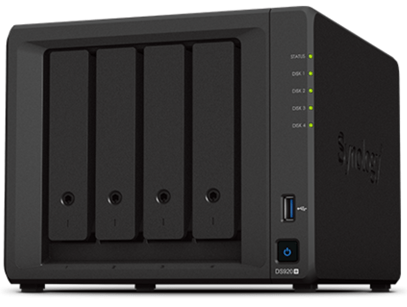How to Deploy Dell NX3340 over Windows Server Failover Cluster
Dell NX3340 is a member of the Dell PowerVault NX line-up. It is a Windows-based NAS appliance that runs Windows Storage Server OS as their baseline operating system. In this article, we are going to cover how to deploy a cluster of Dell NX3340 nodes over Windows Server Failover Cluster to expose NFS or SMB shares over the network.
Before we get into the deployment details, let’s first get to know what a NAS appliance is and how it works:
A NAS appliance is a storage device that is accessed over the network rather than by directly connecting it to a computer. Following are the components that a NAS device contains:
- Storage (FC) – A NAS server can either expose its local storage, that is, the DAS connected on it, or it can take communicate with storage over Fiber Channel protocol to access a volume and then expose it over IP network to the users.
- Networking (IP) – A NAS server contains a networking module that allows it to access the network. The Dell NX3340 uses the HBA card to fetch the storage volumes over FC and its NIC card helps it to present that storage volume over IP to the network.
A NAS server is just like any other regular server which contains compute power and an Operating System, it just provides the additional capabilities which make it to be used as a dedicated purpose-built appliance.
To deploy cluster Dell NX3340 nodes, you would need to configure them in a cluster. The best method to configure them in a cluster is by making them talk to each other at the Operating System level. This can be achieved by configuring the nodes in a Windows Server Failover Cluster.
To configure the Dell NX3340 cluster, navigate to the iDRAC of the server and access the remote console of the server via a web browser. Once you open the remote console you would see the NAS appliance comes loaded with Windows Storage Server 20XX version operating system.
Before we go ahead and start building the Windows Server Failover Cluster, there are a few pre-requisites which one should keep in mind:
- To ensure that all the desired nodes are running on the same version of Windows Server.
- If you wish to add a clustered disk, then all the nodes should have access to the shared storage.
- To ensure that all the nodes are joined to the very same Active Directory domain.
- Make sure that your hardware configuration is supported.
Adding Nodes to the Same Domain – The initial step would require you to add all the NAS appliance nodes to a domain. Navigate to the Server Manager utility and select the local server from the left pane. Click the Workgroup against Domain on the right side. On the pop-up window, click the Change icon and add the domain information about the nodes. Please note that you would need to enter the Domain credentials to add the node to the domain. Repeat the same steps for all the nodes in which you desire to participate in the cluster.
Installing Failover Cluster Feature – Navigate to the Primary node and install the Failover Cluster by navigating to the Server Manager. On the Server Manager, click the Manage button on the right side and select Add Roles and Features. On the next page, select the installed type that is if you want a Role-based or a Feature-based installation, and select Next. On the subsequent pages, you would be required to choose the destination server, roles, and features, etc. Repeat this step for all the nodes to enable Failover Cluster feature in them.
Validate the Configuration – Once all the nodes are prepared with the failover cluster role, navigate to the Tools in Server Manager, and select Failover Cluster Manager. Enter all the required information and Validate the Configuration to confirm if the configuration is perfect for WSFC configuration. The validation tool will come up with warnings if the configuration is not as per best practice.
An important thing to note – Microsoft does not support a Windows Server Failover Configuration which is completed with any error/alert. It’s our recommendation to remediate errors and warnings whatsoever before proceeding with the cluster configuration.
If the cluster validation passes with all the green ticks, then go ahead with the cluster build. In the next blog, we will cover how you can create different kinds of shares with a NAS appliance and the method/commands to share it with different operating systems.
Are you planning on deploying NAS appliances in your environment? Are you looking for a consultation to build a robust Storage Area Network design? We, here at Zindagi Technologies have a team of Storage/Servers/Virtualization Solution Architects with over 50+ years of cumulative experience who have worked in multiple prestigious projects. For professional services like Planning, Designing, Implementation, PoC for your Storage Area Network, reach us at our office or give us a call at +919773973971.
Author
Sumit Yadav
Data Center Consulting Engineer
